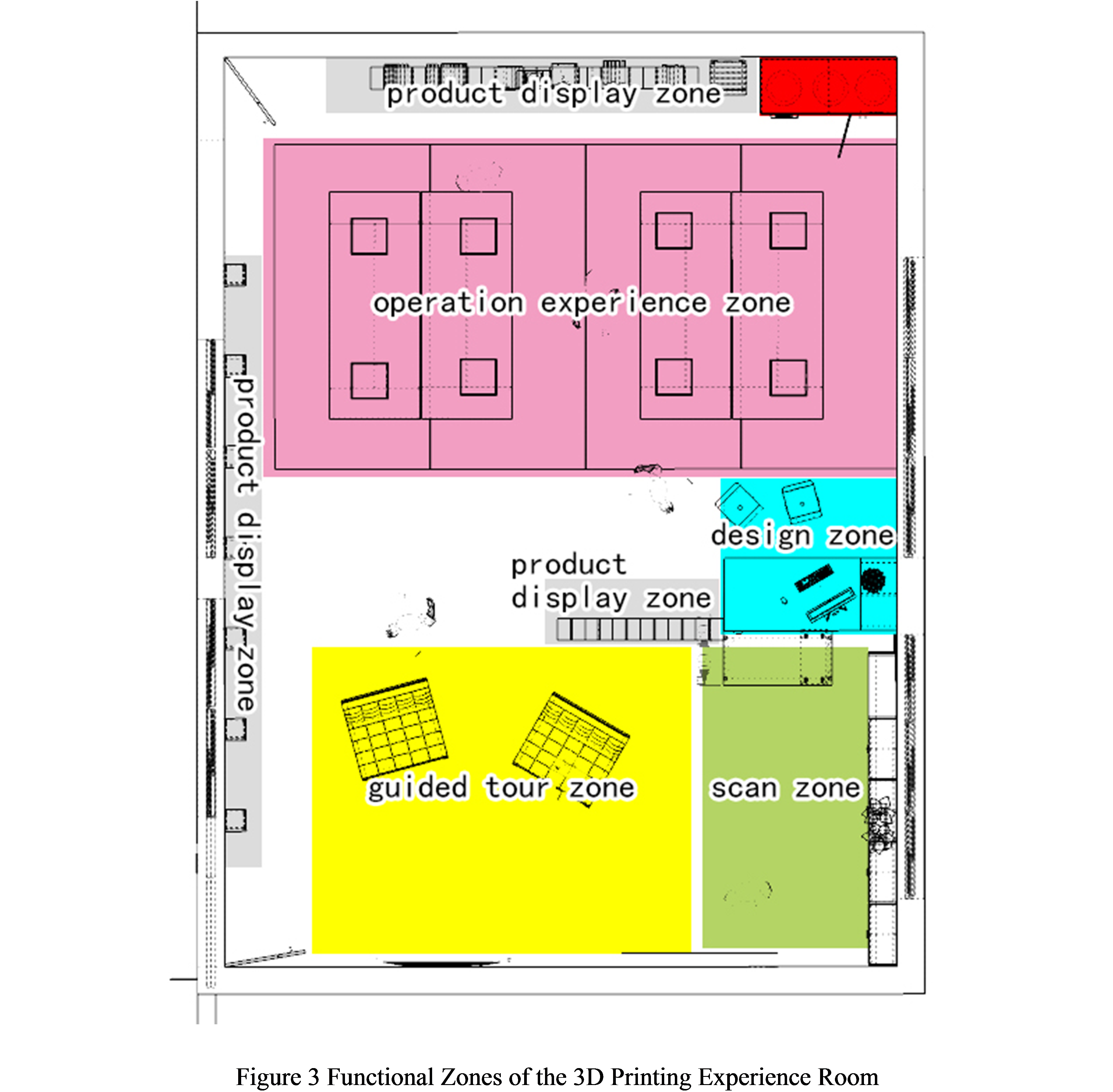IV.THE BASIC CONSTRUCTION OF THE I-EXPERIMENT OFFLINE EXPERIENCE
With regard to offline experiential learning, the focus is learning by doing. The i-3D offline printing lab has been constructed as a pilot project as part of this research. 3D printing, aka additive manufacturing, constructs objects through layers of printing with special materials like metal powder, ceramic powder, plastics, resin and cell tissue based upon digital model documents. The construction of the i-3D printing lab, aimed at “the scientific popularization of 3D printing technology”, “user experience and practice of 3D printing equipment” and “3D design creation and innovation”, is a new type of experiential space (including an experience room and the i-experiment website) representing the functions of teaching interaction, design creativity, operation experience and product display.
The 3-D printing experience room consists of a guided tour zone, design zone, scan zone, operation experience zone and product display zone. Constructed by the community college, the room is equipped with a 3D printer, 3D scanner, high-performance desk-top computers and 3D printing materials, such as PLA resin, as seen in Figure 3.

The guided tour zone functions as a reception for guided tours. After watching micro-courses and listening to open lectures on 3D printing, learners gain an initial understanding of 3D printers and the printing process. In the scan zone, the 3D scanner is arranged for teaching, making 3D digital modeling, and 3D human body modeling in particular, possible. The design zone presents the complete 3D picture through PC software so that learners can change and adjust the data of the 3D model, and build new models using 3D modeling software. In the operation experience zone, learners can copy the sliced 3D model obtained by designing or scanning and printing it with a 3D printer, which can be completed individually or in a group. The printing process can also be observed from several perspectives. The product display shows the works completed by the learners and acts to strengthen interaction and exchange during the course of the 3D design and creation process.
As a supplement and extension of offline lab, the online 3D printing lab has various functional zones that match those of the offline lab. It has developed corresponding online columns and shares news and resources about the latest international 3D printing technology allowing learners to follow the latest development trends of 3D printing technology, participate in 3D competitions, view display products, obtain learning materials, download 3D models, or set up exchange groups.
At present, the construction of the open physical i-3D printing lab based at Zhongguancun School in Beijing’s Haidian District has been completed. It offers 3D printing training and services for society and plays a role in promoting the construction of an innovative urban area.